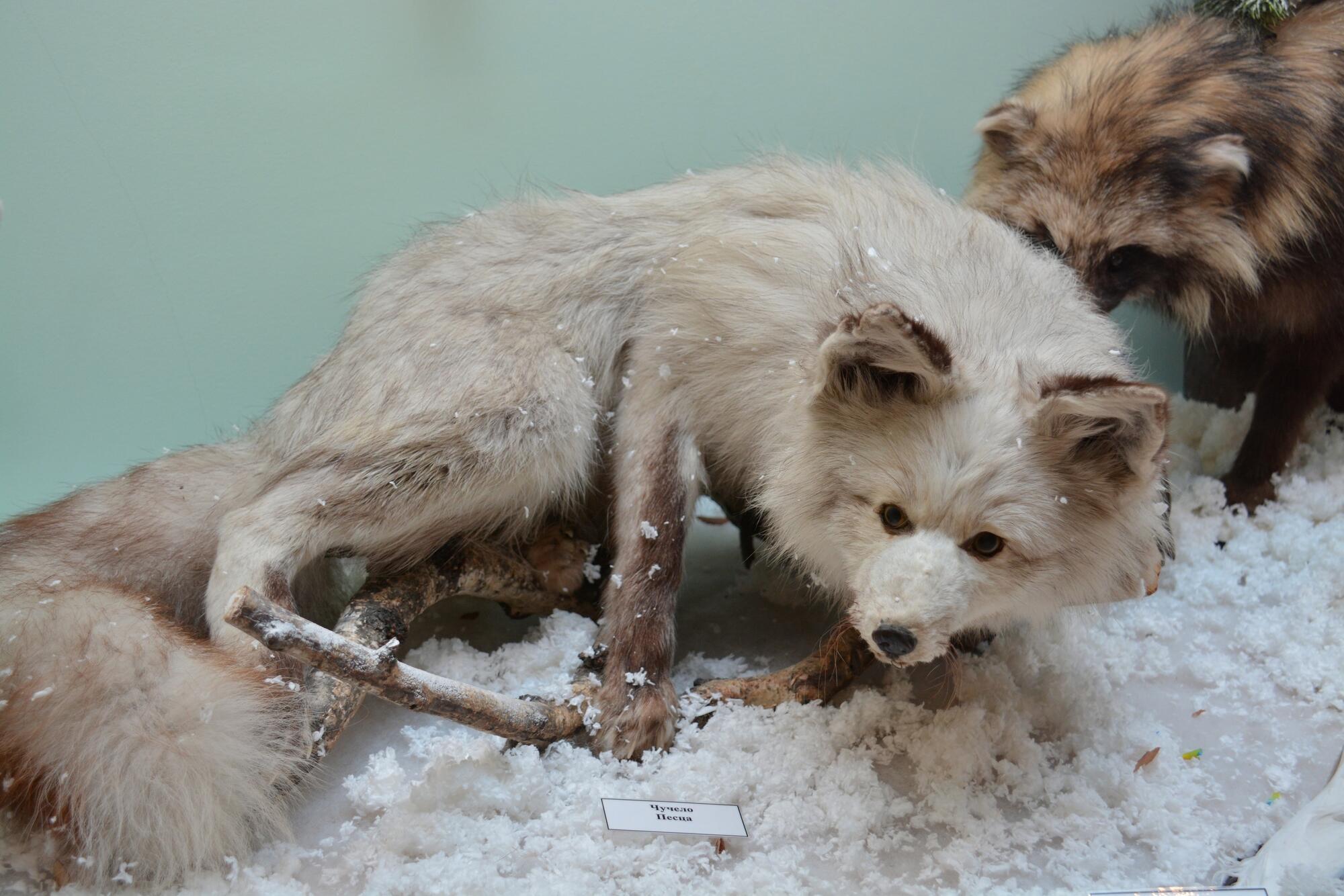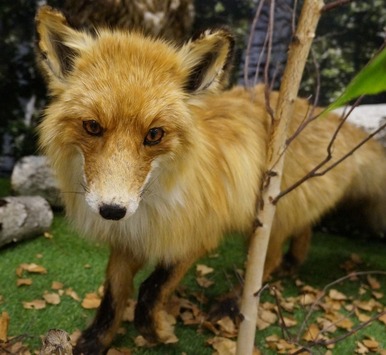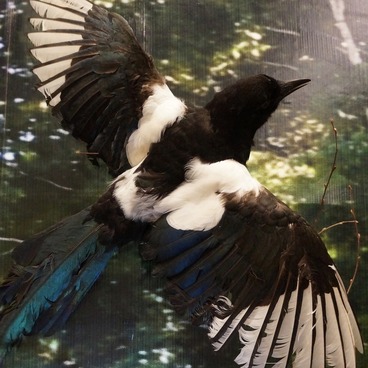The Arctic, or white, fox is a carnivorous mammal in the family Canidae /ˈkan-ə-ˌdē/. In appearance, the Arctic fox resembles the red fox, but its shorter legs make it look squatter. An adult Arctic fox measures up to 75 cm in length with a height at shoulders reaching 30 cm. The average male weighs 3.5 kilograms. The Arctic fox’s lush tail can measure 25 to 30 centimeters. When the animal is standing, the tail touches the ground.
Unlike the red fox, the Arctic fox has a short shout and small round ears clearly visible in summer. In cooler seasons, the ears are almost invisible in the winter fur that protects them against cold burns. The dense and multi-layer fur fully covers the Arctic fox. Combined with its compact build, the fur provides reliable protection against cold and extremely low temperatures down to –60 degrees Celsius. Even the soles of the Arctic fox’s paws are covered with coarse warm hair. This feature gave the species its name lagopus, which is the Greek for ‘a hare’s paw.’
The Arctic fox’s eyes have much pigment, which prevents retina burns that can be caused by sunlight reflected from snow. Heterochromia (when the eyes are two different colors) is fairly frequent among Arctic foxes. They have perfect hearing and an excellent sense of smell. The voice of the Arctic fox resembles yappy barking that switches to growling in case of danger.
The Arctic fox inhabits territories north of the Arctic Circle, on the shores and islands of the Arctic Ocean, in the tundra and tundra forest belt. The animal digs complex underground mazes with many entrances on sand hills and shore terraces—in locations rich with soft soil and stones. There are few locations suitable to dig a burrow in the tundra, so Arctic foxes use the same burrow for years, sometimes, for 15 to 20 years in a row.
The animal feeds on about 125 animal and 25 plant species. The core of its diet includes small rodents, especially lemmings, and birds. On the shore, the Arctic fox often follows polar bears and feeds off killed seals' remains. The Arctic fox will also eat any trapped animals and make no exceptions even for another Arctic fox. In summer, the Arctic fox stores excess food for winter.
The Arctic fox’s litter numbers 7 to 12 pups. Both parents take care of their offspring. A typical Arctic fox family consists of a male, a female, young females from the previous litter, and pups born this year. Typically, different families live independently, but two or three families can make a colony.
Unlike the red fox, the Arctic fox has a short shout and small round ears clearly visible in summer. In cooler seasons, the ears are almost invisible in the winter fur that protects them against cold burns. The dense and multi-layer fur fully covers the Arctic fox. Combined with its compact build, the fur provides reliable protection against cold and extremely low temperatures down to –60 degrees Celsius. Even the soles of the Arctic fox’s paws are covered with coarse warm hair. This feature gave the species its name lagopus, which is the Greek for ‘a hare’s paw.’
The Arctic fox’s eyes have much pigment, which prevents retina burns that can be caused by sunlight reflected from snow. Heterochromia (when the eyes are two different colors) is fairly frequent among Arctic foxes. They have perfect hearing and an excellent sense of smell. The voice of the Arctic fox resembles yappy barking that switches to growling in case of danger.
The Arctic fox inhabits territories north of the Arctic Circle, on the shores and islands of the Arctic Ocean, in the tundra and tundra forest belt. The animal digs complex underground mazes with many entrances on sand hills and shore terraces—in locations rich with soft soil and stones. There are few locations suitable to dig a burrow in the tundra, so Arctic foxes use the same burrow for years, sometimes, for 15 to 20 years in a row.
The animal feeds on about 125 animal and 25 plant species. The core of its diet includes small rodents, especially lemmings, and birds. On the shore, the Arctic fox often follows polar bears and feeds off killed seals' remains. The Arctic fox will also eat any trapped animals and make no exceptions even for another Arctic fox. In summer, the Arctic fox stores excess food for winter.
The Arctic fox’s litter numbers 7 to 12 pups. Both parents take care of their offspring. A typical Arctic fox family consists of a male, a female, young females from the previous litter, and pups born this year. Typically, different families live independently, but two or three families can make a colony.



